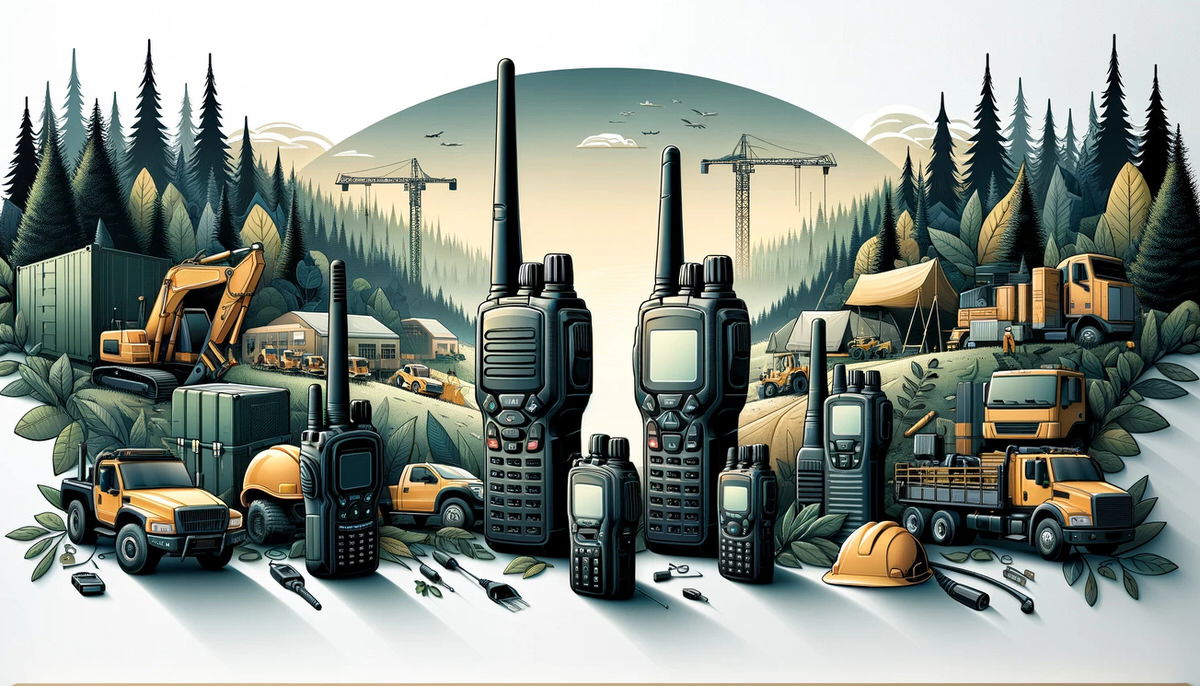Table of Content
- Understanding Walkie-Talkie Basics
- Evaluating Range and Frequency
- Battery Life Matters
- Features Tailored to Your Industry
- Durability and Weather Resistance
- Size and Weight Considerations
- Licensing and Regulations
- Price vs. Quality
- Brand and Warranty Considerations
- Accessories and Expandability
- User-Friendly Design
- Privacy and Security Features
- Conclusion
- FAQs
Have you ever felt like you were trying to communicate through a tin can and string in a world full of smartphones and digital devices? Well, walkie-talkies bring us back to basics, providing a straightforward, reliable way to stay in touch when the frills of modern technology are either too much or simply impractical. Whether you're coordinating a camping trip, managing a bustling event, or keeping a construction site in sync, selecting the right walkie-talkie can be a game-changer. This guide is your friendly companion through the maze of options, ensuring you find a device that fits like a glove for your specific needs.
Understanding Walkie-Talkie Basics
Before diving into the nitty-gritty of selecting a walkie-talkie, it's crucial to understand what makes these devices tick. In essence, a walkie-talkie is a two-way radio, allowing for instant communication between devices on the same frequency or channel. Unlike cell phones, there are no data plans or monthly fees – just push a button, and you're connected.
Evaluating Range and Frequency
The range is the make-or-break feature for many users. It's the distance over which you can communicate clearly without interference. Factors like obstacles (buildings, trees, etc.), frequency band, and power output can affect this. Generally, UHF (Ultra High Frequency) radios work better in urban environments, while VHF (Very High Frequency) is suited for open spaces.
Battery Life Matters
Nothing ends a conversation faster than a dead battery. When choosing a walkie-talkie, consider how long the device can operate on a single charge. Look for models with rechargeable batteries and consider carrying spares for extended use.
Features Tailored to Your Industry
Each industry has its quirks, and manufacturers often design walkie-talkies with these in mind. Whether it's waterproofing for marine use, dust resistance for construction, or hands-free options for event coordinators, there's likely a model that caters to your specific needs.
Durability and Weather Resistance
The environment you'll be operating in plays a significant role in your choice. If you're outdoors or in harsh conditions, look for rugged designs that can withstand drops, dust, and water.
Size and Weight Considerations
Will you be carrying your walkie-talkie all day, or will it sit on a desk? Size and weight can impact user comfort and portability, so choose according to your activity level.
Licensing and Regulations
Some walkie-talkies require a license to operate, especially those with higher power outputs or specialized frequencies. Make sure you're aware of the regulations in your area to avoid fines.
Price vs. Quality
While it's tempting to go for the cheapest option, investing in a quality device can save you money and headaches in the long run. Look for a balance between cost and features.
Brand and Warranty Considerations
A reputable brand can be a sign of quality and reliability. Additionally, a solid warranty can provide peace of mind, covering you against defects or issues.
Accessories and Expandability
Consider what accessories are available for your walkie-talkie, such as headsets, chargers, and extra batteries. Some models also offer expandability options like additional channels or encryption features.
User-Friendly Design
Ease of use is crucial, especially in high-pressure situations. Look for intuitive controls and clear displays that allow for simple operation.
Privacy and Security Features
In certain environments, keeping your communications private is essential. Features like encryption and private channels can help secure your conversations from eavesdroppers.
Conclusion
Choosing the right walkie-talkie is about understanding your needs and the features that will best meet them. By considering the factors outlined in this guide, you can select a device that enhances your ability to communicate, coordinate, and collaborate, no matter where you are or what you're doing.
FAQs
1. Do I need a license to use a walkie-talkie?
It depends on the type and power of the walkie-talkie. Some frequencies and higher power models require a license, so check your local regulations.
2. How can I extend the battery life of my walkie-talkie?
Consider using power-saving features, adjusting the transmit power if your device allows, and carrying spare batteries for longer use.
3. Can walkie-talkies be used for private conversations?
Yes, but ensure your device has privacy features like encryption or private channels to secure your communication.
4. Are all walkie-talkies waterproof?
No, but many models are designed to be water-resistant or waterproof. Check the device specifications for details.
5. How do I choose between UHF and VHF walkie-talkies?
UHF radios are better for urban or indoor environments with lots of obstacles, while VHF models are suited for open areas with fewer obstructions.



